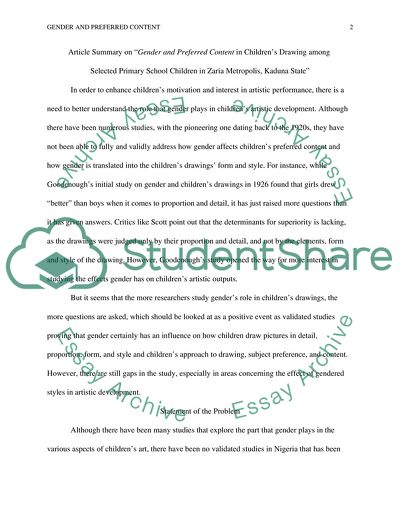Cite this document
(Gender and Preferred Content in Childrens Drawing among Selected Primary School Children Article Example | Topics and Well Written Essays - 1500 words, n.d.)
Gender and Preferred Content in Childrens Drawing among Selected Primary School Children Article Example | Topics and Well Written Essays - 1500 words. https://studentshare.org/visual-arts-film-studies/1745230-child-development
Gender and Preferred Content in Childrens Drawing among Selected Primary School Children Article Example | Topics and Well Written Essays - 1500 words. https://studentshare.org/visual-arts-film-studies/1745230-child-development
(Gender and Preferred Content in Childrens Drawing Among Selected Primary School Children Article Example | Topics and Well Written Essays - 1500 Words)
Gender and Preferred Content in Childrens Drawing Among Selected Primary School Children Article Example | Topics and Well Written Essays - 1500 Words. https://studentshare.org/visual-arts-film-studies/1745230-child-development.
Gender and Preferred Content in Childrens Drawing Among Selected Primary School Children Article Example | Topics and Well Written Essays - 1500 Words. https://studentshare.org/visual-arts-film-studies/1745230-child-development.
“Gender and Preferred Content in Childrens Drawing Among Selected Primary School Children Article Example | Topics and Well Written Essays - 1500 Words”. https://studentshare.org/visual-arts-film-studies/1745230-child-development.


